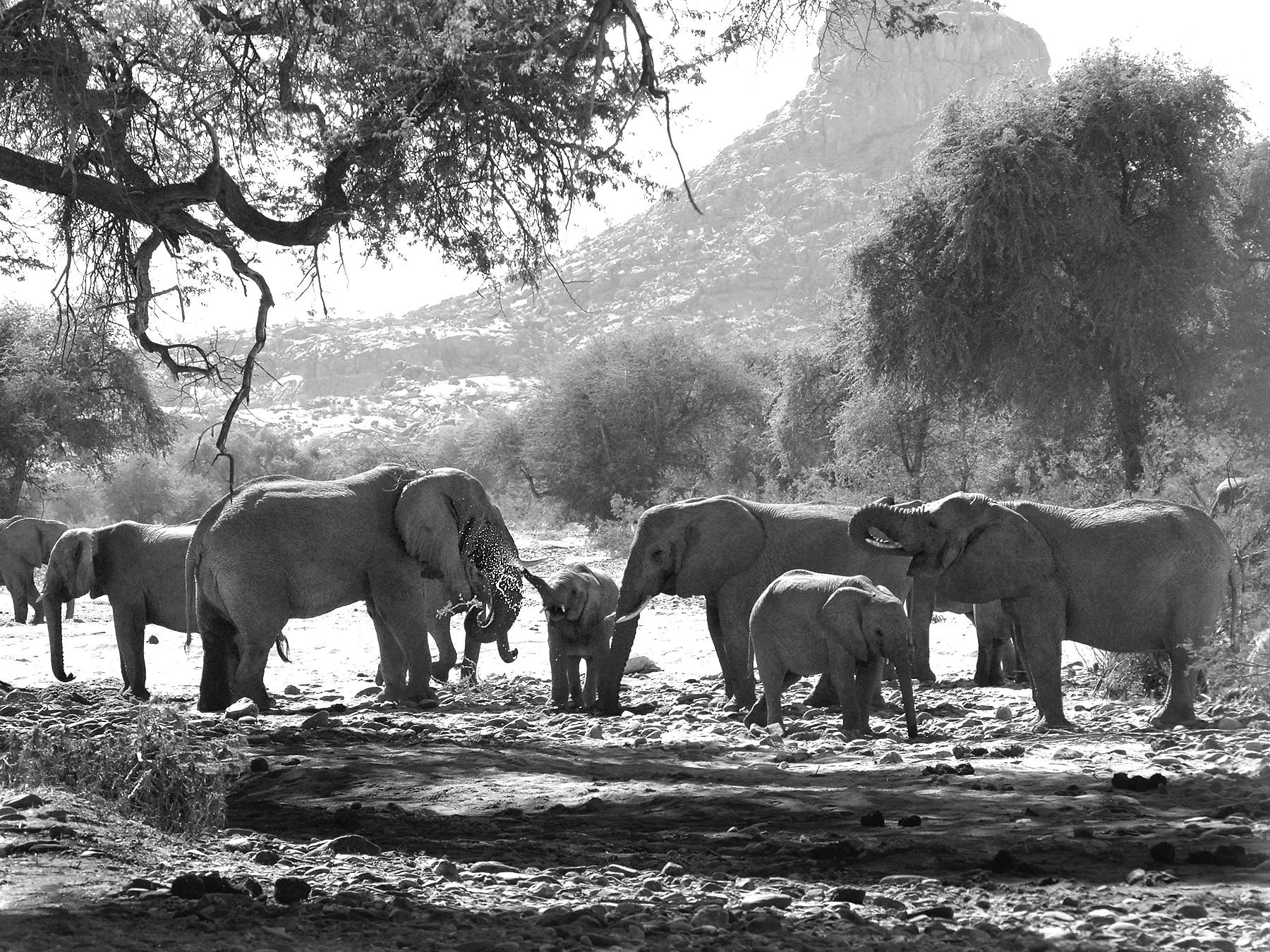With camera in hand, South Whidbey resident Donald J. Miller has traveled extensively, volunteering with wildlife conservation projects in Namibia, Thailand and other countries. He’s also assisted at far-flung health clinics in areas of extreme poverty and during times of natural disaster response.
Elephants loom large in his photography portfolio. He and his wife, Linda Jacobson, both retired nurses, have assisted with several nonprofit organizations involving the earth’s largest living land animal native to Africa and Southern Asia.
Miller will share images and stories from four decades of photographing pachyderms, large and small, 7-9:30 p.m. Saturday, March 30, at Unity of Whidbey.
He’s captured many moments of baby elephants keeping up with their moms and the rest of the matriarchal herd.
In 2015, Miller worked with Elephant Human Relations Aid, EHRA, in their conservation work with Namibia’s desert elephants. Anti-poaching efforts allowed these elephants to reestablish their range where they hadn’t roamed for 40 years. It led to problems preserving the dry country’s precious resource of water needed by both Namibian farmers and elephant herds.
“Elephants would come and get a drink and knock out their water system causing animosity,” Miller explained. “Consequently a large part of EHRA’s work also is coordinating volunteers to build rock walls protecting water storage, and windmills. They also support the village schools and work to educate the children and ranchers about elephants to decrease their fear, enhance appreciation and see them as an asset for tourism and the planet in general.”
Water from the protected tanks fill water troughs outside the wall so both the farmer’s livestock and wildlife can get to it without causing destruction. After helping with water storage efforts, volunteers then spend a patrol week assisting conservation efforts by tracking and observing the desert elephants.
Miller said many of his images were taken during patrol week. Others are from Namibia’s Etosha National Park, one of Africa’s largest game reserves home to zebra, wildebeest, black-faced impala, giraffe, white rhino, big cats and 340 bird species. Sales from his photos support conservation and humanitarian projects.
Miller takes both color and black and white images with a Nikon camera system and a small, mirrorless, lightweight Lumix camera that he first used for wide-angle work.
“It did a very good job and also I noticed when working with people it was much easier to get to a more casual engagement with the smaller and silent camera,” said Miller. “So now I carry both.”
Miller’s interest in photography began in 1965 during a school science trip when naturalist and nature photographer Jim Anderson noticed he was trying to repair his point-and-shoot camera with chewing gum.
“He generously loaned me one of his SLR cameras for the remainder of the trip and provided some tips on creative photography,” Miller writes on his website.
“At times photography has been a life jacket, at times a frustration, but regardless, since 1965 it has just been a part of me. With my images I seek to convey the awe and wonder of the life and universe we experience.”
•Elephant Intrigue: Donald J. Miller, wildlife photographer and conservationist, shares images and stories from four decades of photographing elephants. The presentation, “Elephant Intrique” is 7-9:30 p.m., Saturday, March 30 at Unity of Whidbey, 5671 Crawford Road, Langley. For more information: delicatelightphotography.com


